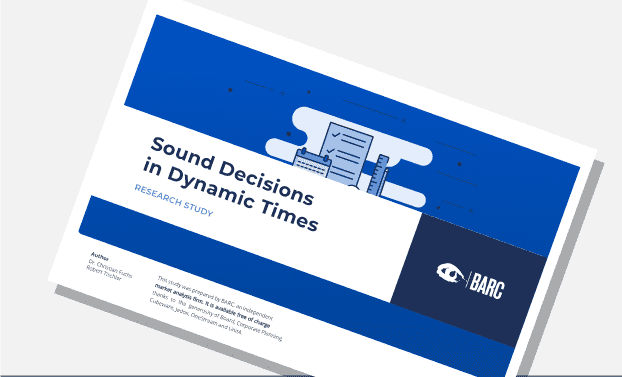Markets and competition today are highly dynamic and complex, and the future is characterized by uncertainty – not least because of COVID-19. This uncertainty is currently at the forefront of everyone‘s minds. Satisfying customer needs and securing solvency in volatile markets both require quick decisions and decisive action.
Corporate planning and forecasting needs to be carried out efficiently, in shorter cycles and must be updated quickly for well-founded decision-making. The dynamic planning process has to deliver meaningful results more quickly and must therefore be highly integrated and automated.
Static methods and outdated tools fail in a dynamic environment
Markets and competition are constantly becoming more dynamic. 89 percent of companies – regardless of size, region or industry – confirm this from their experience. This results in growing competitive pressure, driven by innovation, complexity and changing social and political conditions. The worldwide COVID-19 pandemic is further aggravating the situation.
Increasing dynamics demand adjustments to the corporate management process – as well as strategic planning and forecasting – to meet growing requirements. A dynamic environment requires flexible decision support and short-term updates of targets and forecasts. Companies are experiencing rising pressure to change, primarily because of technological progress (59 percent). Digitalization is a key driver in this respect.
However, individual customer preferences (53 percent), responsibility for the environment (46 percent) and increasing global competition (45 percent) are also driving organizations to adapt. Rising pressure for change is being exerted on companies from all sides. Under these conditions, only truly agile organizations can deliver top performance and thrive in the market.
Targeted investments in infrastructure and know-how are the key to modernizing decision support
Decision-makers need up-to-date and high-quality information to cope with increasing dynamics. The efficient provision of information and a high degree of adaptability to changing conditions and requirements are essential goals and objectives that companies are currently pursuing. In order to remain capable of making good decisions quickly, organizations must update their plans and forecasts frequently and integrate tightly. Therefore, many are moving from classic year-end forecasts to rolling forecasts (42 percent) and attempting to increasingly automate forecasts (43 percent).
Thus, forecasts are becoming a central management tool, which is why 85 percent of companies regularly create forecasts for the entire company or part of it. Together with simulations and scenario analyses, they provide up-to-date management information for decision-makers.
Companies consider the improvement of the software they use (56 percent) to be the most important investment for optimizing planning and forecasting. It is also necessary to improve the underlying data and enhance data literacy as well as the methodological competence of those involved in the dynamic planning.
Forecasts are replacing classical budgeting as the central instrument for corporate management
41 percent of companies update their forecasts and projections at least once a month to take into account changed market signals for strategic management. Without sound software support, this high frequency cannot be handled efficiently and quickly enough to derive insights for decision-makers. Increasing dynamics lead to declining value derived from classical annual planning (budgeting). Therefore, a high degree of automation is needed to update forecasts quickly and efficiently.
To achieve this, many organizations strive for a more intensive use of predictive algorithms, statistical methods and machine learning (ML) models. 75 percent of companies confirm that predictive models provide good forecasts for them, even in volatile markets.
Simulations are the basis for the well-founded analysis and evaluation of alternative actions, opportunities and risks
The potential of simulations as a part of planning and forecasting has long been known. Nevertheless, only about half of the companies surveyed regularly use simulations as a basis for decision-making. However, increasing dynamics and the associated uncertainty massively influence the importance of simulations for corporate management.
They help to evaluate possible future developments as well as internal and external effects thoroughly. The simulation of scenarios thus becomes a decisive competitive factor. It enables companies to prepare for long-term developments in the best possible way and to identify opportunities and risks in a timely manner.
Modern software for corporate planning supports flexible scenario modeling and offers central data management as well as high-performance computations for simulations and analyses. The pressure of increasing dynamics forces companies to deal with simulations and scenario analyses more intensively.
64 percent of participants plan to take a more in-depth approach to planning and corporate management in the future, while 24 percent are already expanding their reach. Simulations are often used for financial planning (59 percent) with considerable potential for future expansion in operational and dynamic planning.
Infographic of the key findings

Sound Decisions in Dynamic Times
Forecasts and Simulations Support Modern Corporate Management
Request the free report now